Reference Measurement Services

Reference Measurement Services
The United Kingdom Accreditation Services (UKAS) has accredited the Weqas Reference Measurement Laboratory to ISO/IEC 17025:2017 (General requirements for the competence of testing and calibration laboratories) in accordance with the requirements of BS EN ISO 15195:2018 (Laboratory medicine – Requirements for the competence of calibration laboratories using reference measurement procedures).
- To develop primary and/or secondary reference methods in order to give stated, traceable, analyte values with known uncertainty in calibrator, QC and EQA material used within Laboratory Medicine. This service is available to QC manufacturers, IVD manufacturers and EQA providers.
- To produce low cost Quality Control matrix reference material (QCRM).
The Reference Measurement Laboratory undertakes network analyses as part of the initiative undertaken by the Joint Committee on Traceability in Laboratory Medicine (JCTLM) and has also been involved in SRM targeting exercises in conjunction with the Institute for Reference Materials and Measurements (IRMM).
All analyses utilise state of the art technology with methods validated according to the guidelines of ISO 15195 (Laboratory Medicine – Requirements for reference measurement laboratories). Traceable reference material and gravimetric preparation of samples is used where possible, allowing the establishment of uncertainty measurements to be estimated according to GUM.
Goals
The Goals of a reference system are:
- To establish worldwide compatibility of clinical measurements
- To evaluate the performance of routine laboratories on an objective basis within systems of QC and QA
- To permit the evaluation of accuracy of analytical systems for routine use
Definition of a reference method
- A method which after exhaustive investigations has been shown to have negligible inaccuracy in comparison with its imprecision.
ButtnerJ et al. Clin Chem Clin Biochem 1980; 18:69-77.
- A thoroughly investigated method, clearly and exactly describing the necessary conditions and procedures, for the measurement of one or more property values that has been shown to have accuracy and precision commensurate with its intended use and that can therefore be used to assess the accuracy of other methods for the same measurement, particularly in permitting the characterization of a reference material.
International Organization for Standardization. ISO Guide 30. 2nd Ed. Geneva: ISO, 1992.
- A technique that can be accomplished with generally available equipment and that, after exhaustive investigation, has been shown to have acceptable known inaccuracy in comparison with a definitive method.
Products
The Reference Measurement Laboratory currently offers reference services using a number of analytical techniques approved as reference methods by the JCTLM. These services are listed on JCTLM website.
We also supply Quality Control Reference Material (QCRM). For details of the material available, please see the QCRM section.
Measurands for which reference values are currently offered, UKAS accredited reference services indicated by *.
| Measurement Technique | Measuand | Link to further details |
|---|---|---|
| Liquid Chromatography Tandem Mass Spectrometry | Steroids - Oestradiol - Progesterone - Testosterone* - Cortisol* | LC-MS/MS Steroids |
| Gas Chromatography Mass Spectrometry | Steroids - Oestradiol - Progesterone - Testosterone* - Cortisol* | GCMS Steroids |
| Gas Chromatography Mass Spectrometry | Bile Acids - Cholic Acid - Deoxycholic Acid - Chenodeoxycholic Acid | GCMS Bile Acids |
| Gas Chromatography Mass Spectrometry | Creatinine* Glucose* Uric Acid* Cholesterol* Triglycerides* | GCMS Creatinine GCMS Glucose GCMS Uric acid GCMS Cholesterol GCMS Triglycerides |
| Flame Atomic Absorption / Emission Spectrometry | Sodium* Potassium* Calcium* Magnesium* Lithium* | FAAS / FAES |
| UV / Vis spectrometry | Lactate Dehydrogenase* Gamma Glutamyl Transferase* Aspartate Transaminase* Alanine Transaminase* | UV / Vis Spec |
Last updated: 24/08/2023





